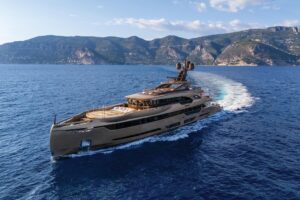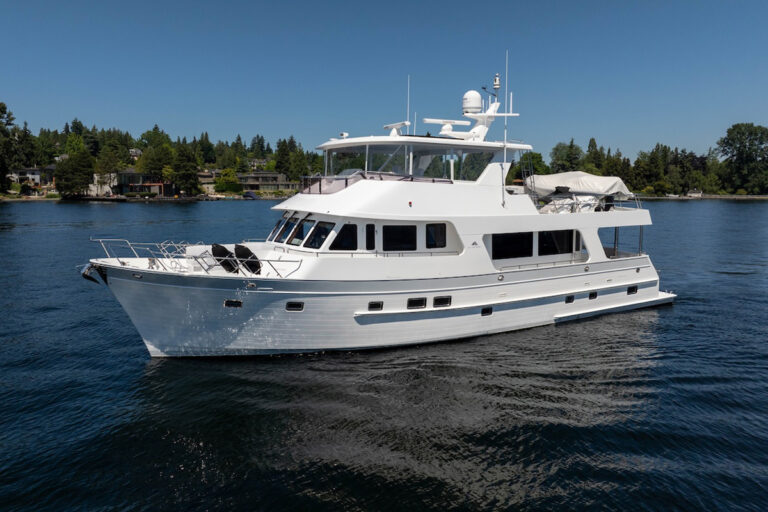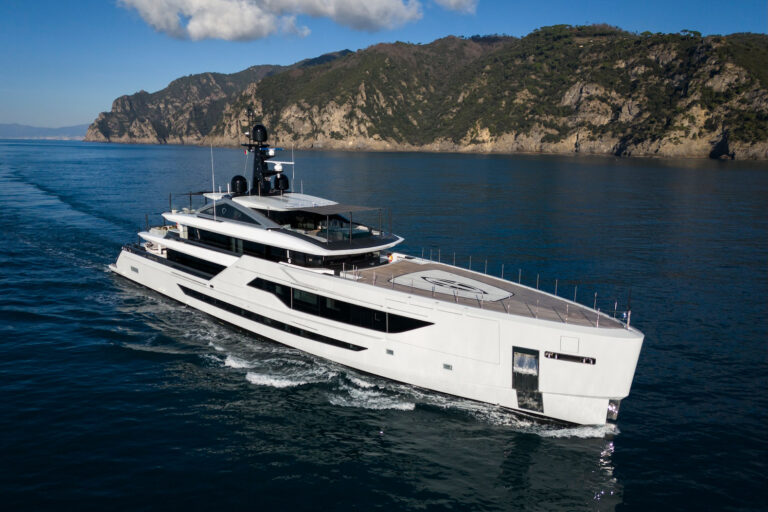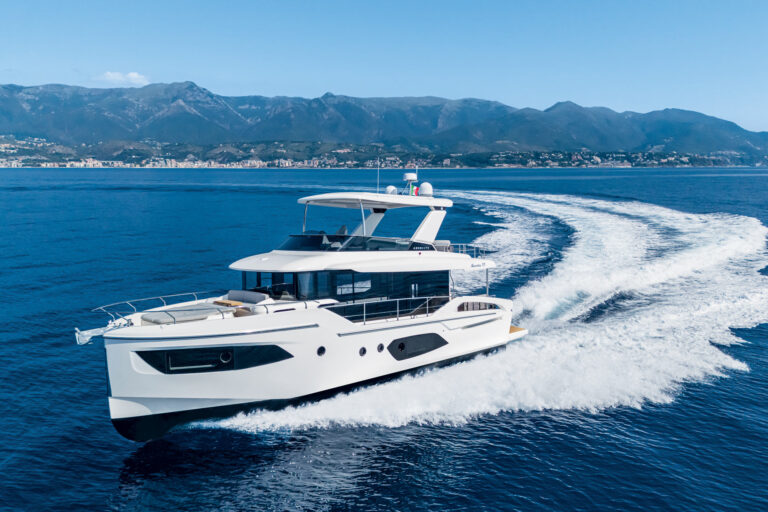James Johnson, a weathered 49-year-old clad in a camouflage cap and pants, a tarnished silver dog tag, a dusty yellow T-shirt and well-worn black combat boots, spotted the oranges first.
We’d been hiking for nearly three hours through the tropical rainforest, along the strenuous Sandy Cruz trail on the 5-square-mile island Saba. Our thighs were burning, our ankles were shaking and our water bottles were nearly empty. We had, a good mile ago, diverted our eyes from the stunning view of Caribbean blue beyond the mahogany trees to carefully examine each rocky foothold that lay ahead, just one slip away from a tumble down the island’s steep side. We would never have summoned the strength to tilt our chins 3 inches upward had Johnson, our guide, not pointed out the fresh, juicy fruit hovering overhead.
There were oranges on nearly every branch. They blazed like setting suns against the dark green canopy. They were nature’s very own sweet, neon, liquid refreshment stand.
They were just out of reach.
Hundreds of feet below, the 122-foot motoryacht Bon Bon was anchored out of sight, but the comfortable pleasures she offered most definitely were not out of mind. A 1994 Flagship, Bon Bon is built for entertainment of the social kind. Her boat deck stools swivel on arms bolted into the bar, ready 24 hours a day for guests to enjoy a rum runner from the frozen drink machine. The seating at the bar in her saloon is actually seating-plush, cozy chairs that invite lingering sips of conversation-and the soft, king-size beds in each of her four staterooms encourage mingling of the post-party persuasion.
Of course, the wailing goat-filled rainforest high above Bon Bon’s flying bridge offered nothing plush, soft or cozy, though at that point in the hike, we would have settled for stretching out along a dry strip of flat dirt and treating ourselves to lingering sips of oxygen. Instead, we checked the nearby rocks for ants, plopped our overheated bodies down and watched our guide like three of Pavlov’s best trained.
Johnson pressed his lips together in a thoughtful smirk that twisted his brownish-blond mustache and hid the few teeth he still has. He squinted through his wrinkled, steely blue eyes and traced the orange tree from its roots to its branches. He marched a few paces down the trail-past the myriad leaves and flowers he considers elixirs for ailments from allergies to impotence-swung his machete out of the brown leather “Rambo III” case strapped to his thigh and lashed it across the strongest-looking of the nearby vines.
“We’ll have to do this MacGyver style,” he gleefully announced, using the makeshift rope to tie two long, narrow sticks together.
About five pokes into the tree and two mouth-watering minutes later, Johnson, who also refers to himself intermittently as “Crocodile Dundee,” used his machete to peel the bitter skin off three wild Saba oranges, a hybrid of grapefruits and lemons. We smashed the balls of fruit into our mouths, spit the pits into nearby groves of elephant ear leaves and let the juice run from the corners of our lips like rivers.
“Now,” a fellow charter guest said with a chuckle, “if we could only find a vodka tree.”
It’s tough to shake that attitude during a weeklong charter aboard this tri-deck, whether you’re exploring the fairy-tale island Saba or dancing away a morning rain shower on Sint Maarten’s Orient Beach. Bon Bon was a private yacht until late 2000, when her owners put her into charter. They still use her frequently, which means she is well kept, and they recently hired an experienced charter captain who knows where to take guests for the kinds of fun and excitement they want.
“That’s the nice thing about these islands. You can tailor the trip to the guest,” said Capt. Chris Young, who previously ran the 110-foot motoryacht Cookie Monster (Yachting Life, October 2000) and brought that boat’s talented chef, Danny Escarment, on board Bon Bon in May. “Some islands are secluded and pristine, some are full of activity. I try to alter the trip to have a mix of seclusion and pina coladas on beaches with cabana boys running around in Speedos.”
It’s tough to imagine Johnson, Saba’s homegrown MacGyver, in a Speedo, but he is a great example of how the captain uses longtime local connections to entertain charter guests.
“A dive guide we work with recommended him to us, and we’ve used him ever since,” Young said of Johnson. “He is knowledgeable, personable. He makes everyone feel comfortable, and he has that jungle-man flair. He’s a survivalist with a tree-hugging attitude.”
Actually, he’s even more than that. Johnson is among the 1,200 natives who still live on Saba, an imposing, environmentally difficult island they and the 400 or so other residents have worked tirelessly to build into a charming, storybook outpost of white cottages with red roofs and green-trimmed windows. It’s about four hours by boat from Sint Maarten, but bears no resemblance. There are no natural harbors, no marinas, no hotels and casinos dominating the shoreline. In fact, there is no shoreline. This dormant volcano veers straight out of the Caribbean into the sky, its lowland desert one of six eco-zones that eventually become a tropical rainforest whose clouds form a smoke-like ring around the island’s tip.
The only way to the top is up the 1,064 steps of the Mount Scenery trail, one of many trails the older locals still call “roads.” They were the only way to get around until the 1960s, when The Road, which twists and climbs through the island’s four villages, was completed. You can get to The Road from The Pier, built in 1972 and still the only place to enter safely by boat. The Pier suits commerce more than tourism, and is scarred from 1999’s brutal Hurricane Lenny.
This harsh facade, for decades the backdrop to some of the world’s finest scuba diving, masks a lovely civilization of simple, friendly folk who welcome travelers. On charter, however, don’t expect to spend more than a day visiting. The island offers no shelter from the open ocean around it. We visited on a calm day, and the swinging and rolling on our 24-foot beam was relentless. Getting comfortable when we returned to the yacht meant getting under way quickly.
The intensity of Saba’s trails, combined with our aging bodies, pushed the next morning’s start back to just before noon. As our group of hikers self-administered medicinal Bloody Marys, the captain made good on his promise to shake up the scenery.
We motored into Sint Maarten’s Orient Bay, a bustling harbor full of parasailors, Wave Runners and barstools. The beaches were jammed, and ours was the only motoryacht there. All eyes were on Bon Bon’s dinghy as we cruised in for cocktails and dancing. The afternoon spent meandering from beach to nude beach and from bar to tiki bar was punctuated by the occasional question, “Did you come in on that boat?” It was the same kind of attention Bon Bon had garnered in Saba, where a reporter ventured to meet us, and during our first night aboard in Sint Maarten’s Simpson Bay, where we got a taste of the impression Bon Bon makes and the attitude she inspires.
We sat on the afterdeck that first night, a group of eight, comfortably spread out around the stunning high-gloss table whose woodwork was completed by a guitar craftsman. Bon Bon’s crew made sure everyone had a cigar to top off the evening’s meal amid discussion of blackjack and U.S. politics. The sun dipped, not ready to surrender the blue sky despite the violet and fuchsia stranglehold on the day’s remaining clouds. The curious passed by from time to time in dinghies, and we raised snifters of smoky, smooth Havana Club rum in their honor.
The sea finally extinguished the fiery red sun as Sinatra crooned in the background. We toasted his thirst for life and contemplated the lyrics, which seemed specially written for the kind of guests who will embrace charter aboard this yacht.
“If you are among the very young at heart.”
Contact: International Yacht Collection, (954) 522-2323; fax (954) 522-2333; info@yachtcollection.com; www.yachtcollection.com. Bon Bon charters at $45,000 per week for eight guests, plus expenses.








